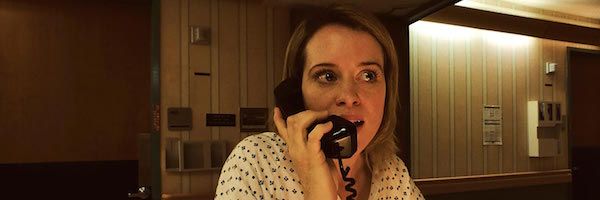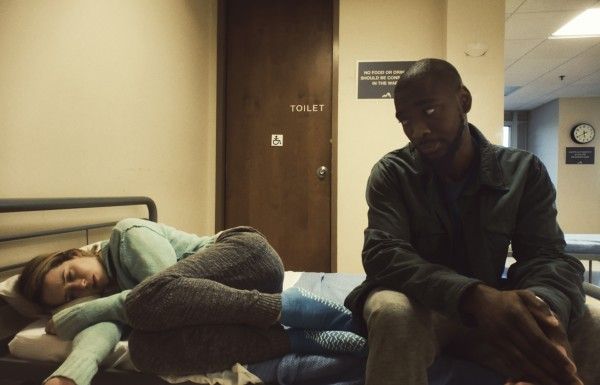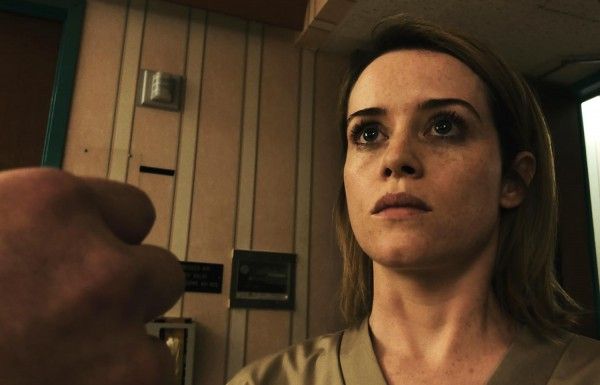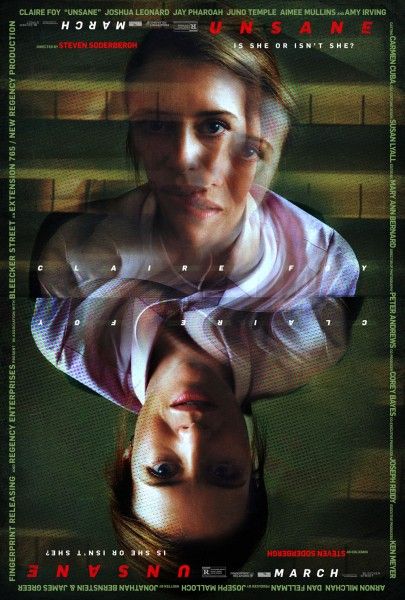My fear about Steven Soderbergh’s Unsane is that it will be remembered as “Steven Soderbergh’s iPhone movie,” when really it’s a far more immediate and timely indictment of the voices we choose to listen to and which ones we ignore. Although the movie feints at the old psychological horror trope of “How would you prove your sanity?”, it eventually arrives at more fertile ground of women who are ignored and left to the mercy of bad men. The insanity isn’t inherent in the character but in the world at large, which makes for a far more terrifying picture. Soderbergh skillfully uses an iPhone’s camera to help ground the drama and highlight the disturbing prevalence of his protagonist’s story. Bolstered by outstanding performances from Claire Foy and Joshua Leonard, Unsane is an ingenious look at the madness of the world rather than an individual.
Sawyer Valentini (Foy) has recently moved to a new city and a new life to get away from David Strine (Leonard), a stalker who completely ruined her old life. Still traumatized by the experience, Valentini goes to speak to a counselor where she admits she’s occasionally had suicidal ideations. This ends up getting her involuntarily committed where she learns from a friendly fellow patient, Nate Hoffman (Jay Pharoah), that the hospital is running an insurance scam that’s going to keep her locked up for at least seven days. But Sawyer has a much bigger problem when an orderly going by the name George Shaw bears a striking resemblance to David, but no one will believe that he’s her former stalker. [minor spoilers ahead for Unsane]
The first half or so of Unsane walks along the well-trod ground of “Is she or is she not crazy?” which ends up putting up a bit of a wall between the film and the viewer. We’ve been trained not to take anything at face value in this genre, so we’re constantly looking for clues. When a fellow patient (Juno Temple) refers to Sawyer as “Allison”, we start wondering if Allison is Sawyer’s real name, if she’s been committed before, if everything was an illusion, so on and so forth. It’s a bit tedious, but it serves the film’s larger purpose, which is that we tend to view victims of abuse with suspicion rather than compassion.
When the movie shifts to firmer ground and we can see the reality of the situation for what it is, Unsane becomes a far more compelling picture because it has something specific on its mind. Although the plot has to make a few logical leaps, the truth underlying the story remains impactful, which is that women often get ignored or dismissed when trying to call attention to an abuser. We’ve seen these stories time and time again during the #MeToo movement, and Soderbergh and writers Jonathan Bernstein and James Greer place these stories in the context of a horror film. The question at the heart of Unsane isn’t “Is Sawyer crazy or not?” She’s clearly traumatized, but the real question is, “What do you do when the world itself is insane?”
Soderbergh draws us in further by using an iPhone camera for the whole movie. The film is still shot professionally (as usual, Soderbergh serves as his own cinematographer), but it’s also unmistakably shot with an phone’s camera. Soderbergh uses this to his advantage to highlight the unsettling banality of Sawyer’s story. By using footage any of us could take (granted, we would also need Soderbergh’s skill with lighting and angles), Sawyer’s trauma becomes more personal and immediate. It’s not something relegated to fancy Hollywood storytelling but a story all of us can recognize. I don’t know if shooting movies on iPhones is the way forward for all movies, but it certainly works wonders with Unsane.
The creep factor is also amplified by Foy and Leonard. The whole cast does a great job, but Foy and Leonard are electric, especially when they’re on screen together. Foy shows she’s the real deal yet again with her no-nonsense approach. What makes her compelling here is that she isn’t trying to trick the audience; she’s usually making moves and acting in a way that most of us would try to act if we were stuck in her situation. She’s forthright and direct with enough uniqueness to establish Sawyer as an individual, but universal enough that we can see ourselves in her predicament. As for Leonard, I’ll simply say that he’s likely a shoo-in for landing on my Best Villain list at the end of the year. He’s oily, pathetic, and maddeningly recognizable.
Unsane is not the movie you’re probably expecting from the trailers or even the first half of the film itself. It’s not about trying to appraise sanity; it’s about trying to appraise truth and what happens when we refuse to accept a truth that’s glaring at us on a daily basis. Although I can’t help but wonder how a female director or female writers would have tackled this story, the crew behind Unsane show a deep amount of compassion for their protagonist, which is what makes the movie so disturbing. It’s unafraid to go to some truly dark and disturbing places, places that are still waiting for us after the credits have rolled.
Rating: B+




